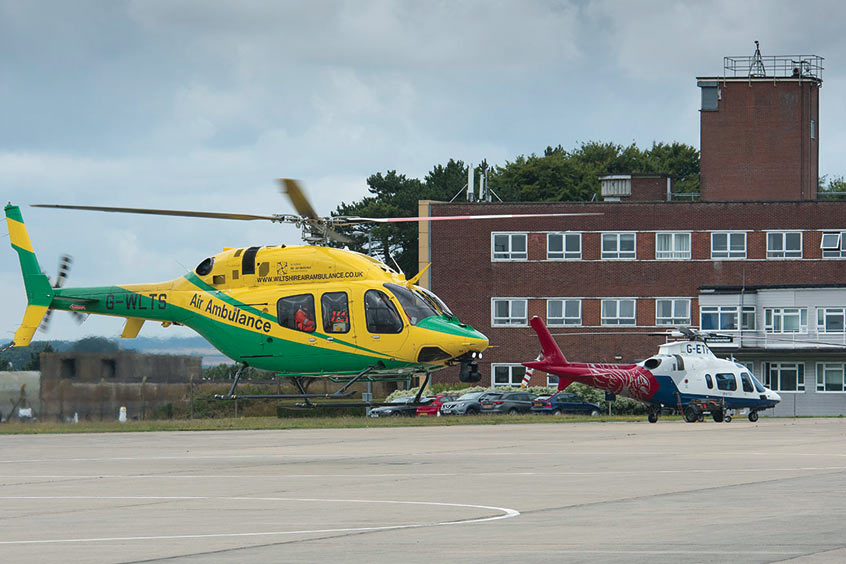Why visit ACE ’25?

In partnership with prime contractor Cobham Aerospace Connectivity, QinetiQ has completed a series of trials to test, integrate and assure the technology for a new 4G LTE aircraft communications system (ACS) that will transform the connectivity and effectiveness of the UK's emergency services air to ground (A2G) communications.
The ACS is a key component of the UK Home Office's Emergency Services Mobile Communications Programme (ESMCP). The ESMCP will deliver the Emergency Services Network, an LTE-based fully integrated, mission critical voice and broadband data service. ESN will replace the current Airwave TETRA radio system.
The airborne component of the ACS Technical Demonstrator Programme consisted of a bespoke aircraft antenna array and a customised airborne LTE radio communications and test system. This was integrated into a QinetiQ Agusta A109 helicopter, which was flown in number of test profiles whilst operating on the ground test network.
The QinetiQ-hosted ground component included a dedicated cellular network and lab based test system. The recent test and assurance flight trials, using an LTE network with base stations at MOD Boscombe Down airfield and QinetiQ's Malvern site, demonstrated the key elements of system design and performance, including: range and altitude performance; handover between ESN's terrestrial and dedicated A2G Band 40; and integration of the core Kodiak Mission Critical Push-To-Talk (MCPTT) application in the selected ACS architecture.
A delegation from the UK Home Office, along with members of the emergency services including Wiltshire Air Ambulance, visited MOD Boscombe Down in July to see the test system in action. Further testing and assurance of the ACS will continue during the development of the system over the next 12-15 months, with operational acceptance and installation to follow. Despite the complexity of the system and stringent safety and airworthiness requirements, the TDP commenced just nine months after Cobham was awarded the contract to develop the ESN ACS.
“We're delighted to have made such significant progress in support of the development and assurance of a system that will truly transform the efficiency and effectiveness of the UK emergency services' air-to-ground communications,” says Geoff Clarkson, chief engineer for the QinetiQ A2G programme. “As part of our mission-led innovation approach we have been able to work closely with the team at Cobham to create the test solution, and then integrate and evaluate the technology quickly and safely.”
Cobham's VP of aerospace systems, Kevin Dunne adds: “As a demonstration of our commitment to the programme and management of risk through early testing, Cobham and our trusted partner QinetiQ implemented the TDP. The programme has so far validated that the key concepts of the ACS project are sound, including Kodiak integration and air-to-ground network performance. Working in close collaboration with a progressive and like-minded partner has now enabled us to make the first ever 4G LTE air-to-ground network call using a MCPTT application.”
Working with Cobham, QinetiQ is delivering a wide range of activities into the ACS project which include bespoke software applications, specialist 4G LTE consultancy and service management while in operational service together with the provision of airborne test and assurance capabilities. Jointly, the two companies will deliver an assured programme for the UK emergency services backed by 10 years of through-life support with the option to extend for a further five years. Full adoption of the new 4G LTE air to ground communications by the UK's emergency services will replace up to 120 existing Airwave TETRA radio systems.